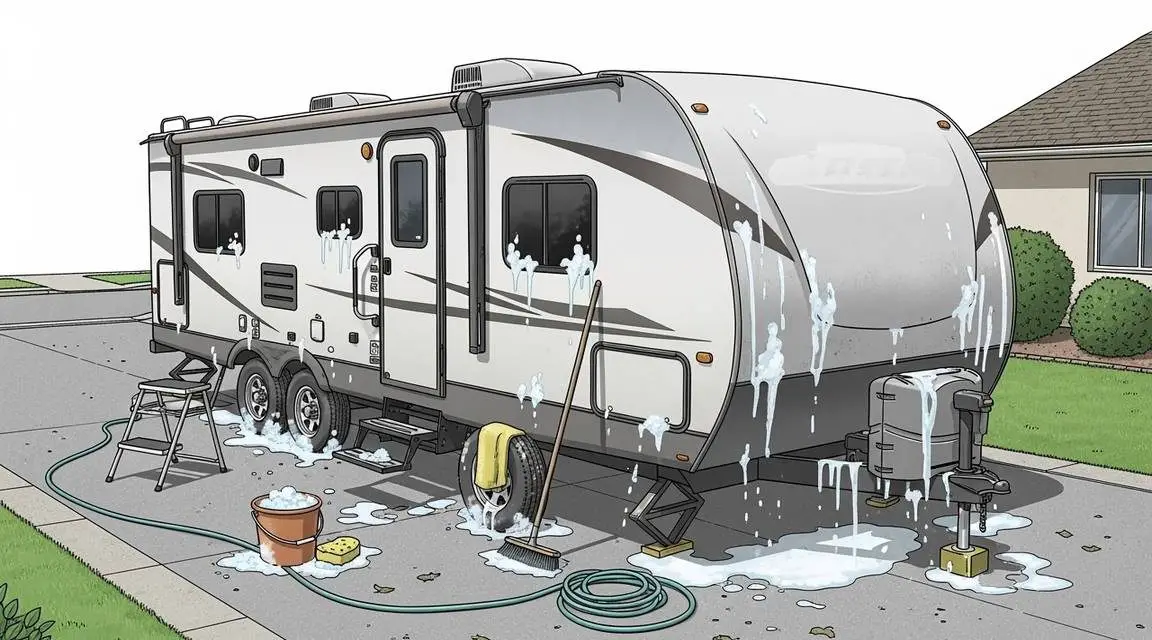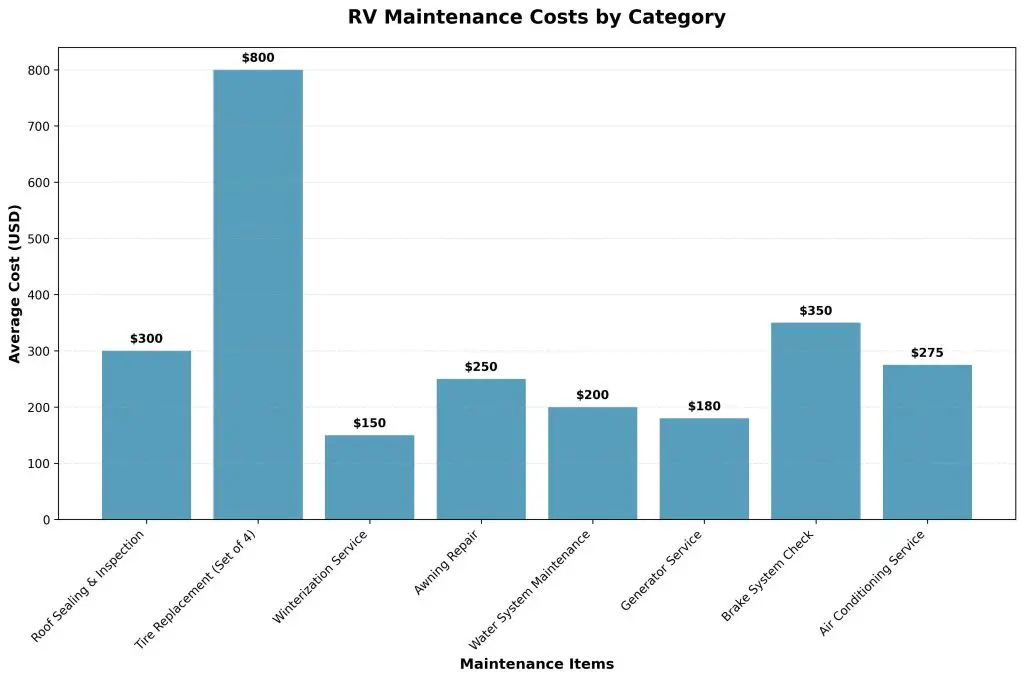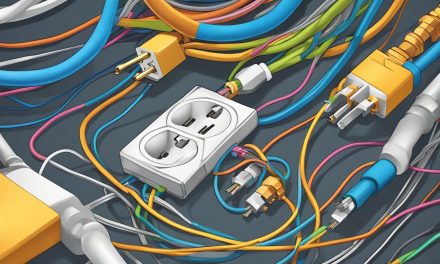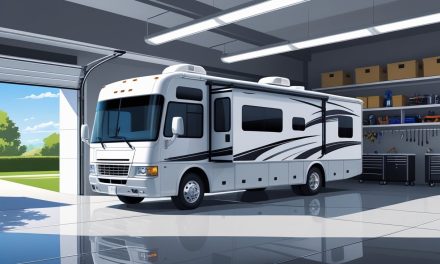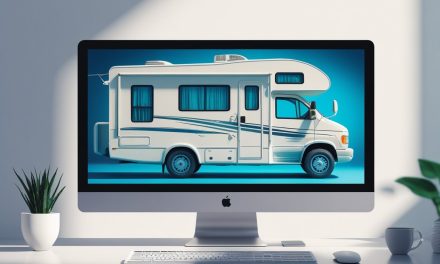Would you like to save this article?
You’ve just spent your hard-earned money on that shiny travel trailer, and you’re ready to hit the road for endless adventures. But wait—before you start planning your next camping trip, you need to know the eight most common mistakes that can absolutely destroy your RV’s value faster than you can say “buyer’s remorse.”
Your RV represents more than just a recreational vehicle—it’s a significant investment that can provide years of family memories and outdoor adventures. However, without proper care and maintenance, that $50,000 dream machine can quickly become a financial nightmare worth less than a used car. The good news is that most value-destroying mistakes are completely preventable if you know what to watch out for.
Understanding these common pitfalls will not only save you thousands of dollars but also ensure that your RV retains its value for years to come. Whether you’re a seasoned RV owner or just starting your journey, these insights will help you protect your investment and avoid the most costly mistakes that plague RV owners nationwide. The RV industry sees billions in depreciation annually, but smart owners who avoid these mistakes can significantly slow that process.
According to industry data, RVs depreciate between 10-20% in their first year alone, with travel trailers losing 36-38% of their value within five years. However, well-maintained RVs with proper documentation and care can retain significantly more value than neglected units. Your approach to RV ownership in the first few years will determine whether you’re protecting a valuable asset or watching your investment crumble.
1. Neglecting Regular Maintenance Like It’s Optional
Your RV isn’t a set-it-and-forget-it investment that magically maintains itself while parked in your driveway. Think of maintenance as the difference between owning a reliable home-on-wheels and a rolling money pit that drains your bank account faster than a leaky faucet. Research shows that RVs depreciate between 10-20% in the first year alone, and poor maintenance can accelerate this depreciation dramatically, turning your dream machine into a financial nightmare.
The Roof: Your RV’s First Line of Defense
The roof is your RV’s most critical component, yet it’s often the most neglected. A single leak can cause thousands of dollars in interior damage, affecting everything from flooring to electrical systems. Professional RV inspectors recommend checking your roof every three months, with comprehensive inspections twice annually.
Essential Roof Maintenance Checklist:
- Sealant inspection around all vents, air conditioning units, and antenna mounts
- Membrane condition checking for cracks, tears, or punctures
- Drain system ensuring gutters and downspouts are clear
- Fastener tightness verifying all screws and bolts are secure
- Accessory mounting checking stability of roof-mounted equipment
According to RV maintenance experts, most roof leaks develop gradually over 6-12 months, making regular inspections crucial for early detection. Professional roof maintenance costs between $200-500 annually, while roof replacement can exceed $8,000-15,000 depending on your RV’s size and type.
Tire Safety: The Foundation of RV Security
Your tires are literally what keep you rolling safely down the highway, yet tire-related incidents are among the most common RV emergencies. RV tires should be inspected every 30 days for proper pressure, tread wear, and sidewall damage. Unlike car tires, RV tires carry heavier loads and experience different stress patterns, making proper maintenance even more critical.
Tire Pressure Monitoring Systems (TPMS) have become essential safety equipment for serious RV owners. Popular systems like the TST 507 and TireMinder A1A provide real-time pressure and temperature monitoring, alerting you to potential problems before they become dangerous blowouts. These systems typically cost $200-400 but can prevent thousands in damage and potential accidents.
A tire replacement set can cost $800-1,200 or more, but it’s far cheaper than dealing with a blowout on the highway. Professional RV technicians recommend replacing RV tires every 6-7 years regardless of tread depth, as rubber compounds deteriorate over time even with minimal use.
Maintenance Cost Reality Check
Annual RV maintenance typically costs between $1,500-3,000 for a well-maintained unit, but neglecting maintenance can lead to repair bills exceeding $10,000-20,000. Insurance claims for water damage alone average $7,000-12,500, with some claims reaching $50,000 or more for extensive damage.
Here’s the maintenance reality: Skipping regular maintenance is like ignoring chest pains and hoping they’ll go away. Your RV might seem fine today, but neglect compounds over time, and when problems finally surface, they’ll hit your wallet harder than a surprise tax bill. Smart RV owners budget 3-5% of their RV’s value annually for maintenance and repairs.
2. Letting Your Kids Transform It Into a Playground
Family camping trips are supposed to create lasting memories, not lasting damage to your RV’s interior that haunts your resale value for years to come. Children can be incredibly hard on RV interiors, and the wear and tear adds up quickly when you’re dealing with a confined space that wasn’t designed for high-energy activities.
The Hidden Costs of Kid-Friendly RVing
The average RV interior repair costs can range from $200 for minor upholstery fixes to over $2,000 for significant damage to cabinetry and flooring. Sticky fingers, spilled drinks, and high-energy play can destroy fabrics, scratch surfaces, and damage delicate mechanisms like slide-out systems. What starts as innocent fun can quickly turn into expensive repairs that insurance often won’t cover.
Common Kid-Related RV Damage:
- Upholstery stains from food, drinks, and art supplies ($150-500 per repair)
- Cabinet door damage from excessive slamming ($200-800 per door)
- Flooring scratches from toys and high-traffic areas ($500-2,000 per section)
- Screen door damage from repeated slamming ($100-300 per door)
- Wall damage from impact and adhesive decorations ($300-1,200 per repair)
Interior Protection Strategies
Consider investing in protective covers for furniture and establishing clear rules about food and drinks inside the RV. Create designated play areas and pack appropriate indoor activities that won’t damage your RV’s interior. Many experienced RV families use washable slipcovers, removable floor mats, and designated snack zones to minimize damage.
Child-Proofing Your RV Investment:
- Furniture protection with washable covers and protective films
- Designated eating areas with easy-to-clean surfaces
- Toy storage systems that prevent items from becoming projectiles
- Wall protection using removable guards in high-traffic areas
- Cleaning supplies specifically designed for RV interiors
Safety considerations are equally important. Unlike homes, RVs have limited escape routes and different structural considerations. Child safety experts recommend installing child-proof locks on cabinets containing dangerous items, using window restrictors to prevent falls, and ensuring proper car seat installation for travel.
Kid-proofing reality check: Your RV isn’t Chuck E. Cheese’s on wheels, and treating it like a playground will give you about as much resale value as a used tissue. Kids will be kids, but that doesn’t mean your investment has to suffer the consequences of their artistic expression with permanent markers and peanut butter fingerprints on every surface.
3. Driving Like You’re Training for NASCAR
Speed kills—RV values, that is. Towing a travel trailer at excessive speeds puts enormous stress on every component, from the hitch system to the trailer’s frame and suspension. Most RV manufacturers recommend maximum towing speeds of 65 mph, with many experienced RVers preferring 55-60 mph for optimal safety and component longevity.
The Physics of Destructive Towing
The physics of towing creates significant forces that increase exponentially with speed. At 75 mph, the aerodynamic drag on your trailer is dramatically higher than at 60 mph, putting stress on your tow vehicle and potentially causing dangerous sway conditions. According to RV towing safety experts, excessive speed is particularly dangerous when towing, as it reduces your ability to react to emergencies and increases the likelihood of accidents.
Speed-Related Damage Factors:
- Tire wear accelerates exponentially at higher speeds
- Suspension stress increases with aerodynamic loading
- Brake system wear from repeated high-speed stopping
- Hitch components experience greater stress cycles
- Frame fatigue from sustained high-speed vibration
Weight Distribution and Sway Control
Proper weight distribution hitches are essential for safe towing, especially at highway speeds. Systems like the Equal-i-zer and Blue Ox weight distribution hitches help distribute tongue weight across your tow vehicle’s axles, reducing the likelihood of dangerous sway conditions. These systems typically cost $300-800 but can prevent thousands in accident damage.
Essential Towing Safety Equipment:
- Weight distribution hitch with integrated sway control
- Brake controller properly calibrated for your trailer
- Safety chains rated for your trailer’s weight
- Breakaway system in case of hitch failure
- Extended mirrors for proper visibility
Many RV insurance policies include coverage for towing-related accidents, but claims can still result in significant deductibles and rate increases. Professional drivers recommend practicing in empty parking lots before hitting the highway, especially when learning to back up and maneuver in tight spaces.
Towing speed reality: Your RV isn’t training for the Indy 500, and neither should you be. Slow down, enjoy the scenery, and arrive at your destination with your sanity—and your trailer—intact. The campground will still be there when you arrive at a reasonable speed, and your RV will thank you with years of reliable service.
4. Using Your RV as an Expensive Storage Unit
Your RV should be ready for adventure, not serving as a glorified storage facility for your garage sale leftovers and forgotten exercise equipment. When you stuff your RV with non-camping items, you’re creating several problems that can seriously damage both its condition and resale value.
The Hidden Dangers of RV Storage
Moisture is the enemy of stored items, and RVs can develop humidity issues that lead to mold, mildew, and pest problems. That exercise bike you’re storing might seem harmless, but it can trap moisture underneath and create perfect conditions for floor rot. According to RV storage experts, improper storage practices account for 30-40% of RV interior damage claims.
Storage-Related Problems:
- Moisture accumulation leading to mold and mildew growth
- Pest attraction from stored food items and organic materials
- Weight distribution issues affecting handling and tire wear
- Ventilation blockage preventing proper air circulation
- Interior damage from shifting items during travel
Weight Considerations and Structural Stress
Overloading your RV with stored items can exceed weight limits, causing tire wear, suspension damage, and structural stress. Most travel trailers have cargo carrying capacities between 1,000-2,000 pounds, and it’s surprisingly easy to exceed these limits when using your RV for storage.
Proper Storage Guidelines:
- Weight distribution keeping heavy items low and centered
- Moisture control using desiccants and ventilation
- Pest prevention through proper food storage and sealing
- Accessibility ensuring emergency exits remain clear
- Inventory management keeping track of stored items
Professional RV storage facilities charge $50-200 per month, making your RV an expensive storage alternative. More importantly, using your RV for storage prevents you from using it for its intended purpose—creating memories and enjoying outdoor adventures.
Storage unit reality: You’re basically paying $50,000 for the world’s most expensive self-storage facility, except this one has wheels and depreciates faster than your enthusiasm for that exercise bike you’ll never use. Keep your RV ready for adventure, not archaeology.
5. Making Permanent Modifications That Reflect Your “Unique” Taste
Your RV modifications should enhance value, not destroy it faster than a reality TV show cancellation. While personalizing your space is natural, permanent changes that reflect highly specific tastes can severely limit your resale market and potentially void warranties.
The Warranty Implications of Modifications
According to RV warranty experts, modifications to electrical, plumbing, heating, or cooling systems can void your warranty coverage. Even seemingly minor changes can have major implications if they’re connected to systems that later fail. Professional modifications done by certified RV technicians sometimes maintain warranty coverage, but DIY projects rarely do.
Modifications That Can Void Warranties:
- Electrical system changes affecting 12V or 120V systems
- Plumbing modifications altering water supply or waste systems
- Heating/cooling system alterations or additions
- Structural changes affecting frame or support systems
- Appliance replacements with non-approved units
Resale Value Impact of Modifications
The RV depreciation data shows that RVs lose 36-38% of their value in the first five years, and non-reversible modifications can accelerate this depreciation even further. Buyers in the used RV market typically prefer units that haven’t been heavily modified, as modifications can indicate potential problems or reduced reliability.
Smart Modification Strategies:
- Reversible changes that can be undone for resale
- Professional installation maintaining warranty coverage
- Quality materials that enhance rather than detract from value
- Documentation keeping records of all modifications
- Universal appeal avoiding highly personal design choices
Popular modifications that can add value include solar panel systems, upgraded appliances, and improved storage solutions—but only when professionally installed and properly documented. DIY electrical work, custom paint jobs, and structural modifications typically reduce value.
Modification wisdom: That psychedelic unicorn mural might perfectly express your inner artist, but it’s about as appealing to future buyers as a anchovy pizza at a vegetarian convention. Keep changes tasteful, reversible, and universally appealing if you want to protect your investment.
6. Improper Winter Storage That Invites Disaster
Winter storage isn’t just about finding a place to park your RV—it’s about properly preparing it for months of inactivity that can either preserve or destroy your investment. Improper winterization can lead to burst pipes, dead batteries, pest infestations, and structural damage that can cost thousands to repair.
The Comprehensive Winterization Process
The winterization process involves much more than just draining water systems. According to RV storage specialists, proper preparation can prevent 90% of storage-related damage claims. The process typically takes 4-6 hours and costs $150-300 if done professionally, but can prevent thousands in damage.
Essential Winterization Steps:
- Water system draining and antifreeze protection
- Battery maintenance and proper storage
- Propane system preparation and safety checks
- Exterior sealing and UV protection
- Interior preparation and pest prevention
Battery Maintenance During Storage
Battery maintenance during storage is crucial for both safety and longevity. RV batteries can freeze and crack if discharged, requiring expensive replacement. Professional recommendations include disconnecting batteries and storing them in a warm, dry location, or using a battery tender to maintain proper charge levels.
Battery Storage Best Practices:
- Disconnect and remove batteries when possible
- Clean terminals and apply protectant
- Store in temperature-controlled environment
- Charge monthly or use automatic maintainer
- Check electrolyte levels in flooded batteries
Propane System Preparation
Propane systems require special attention during winter storage. Tanks should be filled rather than emptied, as empty tanks can collect moisture and rust internally. All appliances should be turned off, and the main valve should be closed. Professional inspection is recommended annually to ensure safety.
Propane Storage Guidelines:
- Fill tanks to prevent internal moisture
- Close all valves at appliances and main supply
- Inspect connections for leaks or damage
- Check regulators for proper operation
- Schedule professional inspection annually
Improper storage can result in insurance claims averaging $3,000-8,000 for water damage, $1,500-5,000 for pest damage, and $2,000-10,000 for structural problems. Many insurance policies specifically exclude damage from improper storage or lack of maintenance.
Winter storage truth: Proper winterization is like wearing a coat in a blizzard—skip it, and you’ll be miserable and expensive to fix later. Your RV needs protection from winter weather more than a vampire needs protection from sunlight, and the consequences of neglect can be just as devastating.
7. Skipping Regular Washing and Waxing Like It’s Optional
Your RV’s exterior is under constant assault from UV rays, road salt, bug splatter, and environmental contaminants that can cause permanent damage if left untreated. Regular washing and waxing isn’t just about appearance—it’s about protecting your investment from expensive restoration or replacement.
The Science of RV Exterior Protection
Industry experts recommend washing your RV at least once a month and waxing it twice a year minimum. RV paint and gel coat are more susceptible to damage than automotive finishes, making regular care essential. The oxidation process begins immediately when your RV is exposed to sunlight, and without proper protection, gel coat can become chalky and faded.
Exterior Damage Timeline:
- 30 days – Initial contamination buildup
- 60 days – UV damage becomes visible
- 90 days – Oxidation process accelerates
- 6 months – Permanent staining possible
- 1 year – Restoration required instead of maintenance
Professional vs. DIY Cleaning
Professional RV detailing services typically charge $200-500 for a complete wash and wax, while DIY maintenance costs $50-100 in supplies per treatment. Quality products like Meguiar’s, Chemical Guys, and specialized RV cleaners provide better protection than household alternatives.
Essential Cleaning Supplies:
- RV-specific soap that won’t strip wax
- Soft-bristle brushes for different surfaces
- Microfiber towels for scratch-free drying
- Quality wax or ceramic coating
- Bug and tar remover for stubborn contaminants
Washing Frequency and Technique
Different RV materials require different care approaches. Fiberglass gel coat needs different treatment than aluminum or painted surfaces. Professional detailers recommend starting from the top and working down, using separate wash mitts for different areas to prevent cross-contamination.
Proper Washing Technique:
- Pre-rinse to remove loose debris
- Two-bucket method for wash and rinse water
- Section-by-section cleaning to prevent soap drying
- Immediate drying to prevent water spots
- Wax application following manufacturer instructions
UV damage is permanent and can cost $5,000-15,000 to restore professionally. Regular washing and waxing typically costs $200-400 annually but can prevent thousands in restoration costs. Insurance policies rarely cover damage from lack of maintenance, making prevention the only protection.
Cleaning reality: Neglecting to wash your RV is like never showering—eventually, nobody wants to be around you, and the problem becomes harder to fix the longer you wait. Your RV deserves better than becoming the neighborhood eyesore that makes property values drop.
8. Losing Important Documentation Like It’s Disposable
Your RV’s paperwork is nearly as important as the RV itself, and losing it can cost you thousands in reduced resale value, legal complications, and missed warranty coverage. Without proper documentation, you can’t prove ownership, transfer warranties, or demonstrate the care and maintenance history that buyers expect.
Essential Documentation Requirements
Essential documents include the title, registration, warranty information, service records, and receipts for major repairs or modifications. A well-organized maintenance file can actually increase your RV’s resale value by 10-15% by proving it has been properly cared for.
Critical Documents to Maintain:
- Title and registration for legal ownership
- Warranty documentation for all components
- Service records with dates and descriptions
- Modification receipts with professional installations
- Insurance documentation and claims history
The Resale Value Impact of Documentation
According to RV valuation experts, keeping detailed maintenance records can significantly boost your RV’s resale value. These records serve as proof of proper care and can justify asking prices 15-25% higher than similar units without documentation.
Documentation Benefits:
- Increased resale value through proven maintenance
- Warranty protection for covered repairs
- Insurance claims support with proper records
- Legal protection in ownership disputes
- Buyer confidence in purchase decisions
Digital Backup and Organization
Many states require specific documentation for RV registration and insurance. Lost titles can take months to replace and may require expensive bonding processes. Creating digital backups of all important documents and storing them securely online provides protection against loss or damage.
Digital Documentation Strategy:
- Cloud storage for accessibility anywhere
- Organized folders by system and date
- Regular updates after each service
- Password protection for sensitive documents
- Multiple backup locations for redundancy
Professional RV appraisers report that units with complete documentation typically appraise 20-30% higher than those without records. Service records help establish maintenance patterns and can identify potential problems before they become major issues.
Documentation wisdom: Losing your RV’s paperwork is like losing your driver’s license right before a road trip—technically you might still be able to drive, but good luck explaining that to everyone you encounter along the way. Proper documentation is your RV’s resume, and a good resume opens doors that a blank one can’t.
Protect Your Investment and Hit the Road with Confidence
Your RV represents more than just a vehicle—it’s your ticket to freedom, adventure, and countless memories waiting to be made. By avoiding these eight value-destroying mistakes, you’re not just protecting your investment; you’re ensuring that your RV will be ready for every adventure that lies ahead.
Remember that proper RV care isn’t just about maintaining resale value. It’s about safety, reliability, and the peace of mind that comes from knowing your home-on-wheels is ready for whatever the road brings. Whether you’re planning a weekend getaway or a cross-country adventure, these preventive measures will keep your RV running smoothly for years to come.
The difference between a well-maintained RV and a neglected one isn’t just measured in dollars—it’s measured in the confidence you’ll have every time you hitch up and head out for your next adventure. Smart RV owners understand that prevention is always cheaper than repair, and that the time invested in proper maintenance pays dividends in reliability, safety, and value retention.
Your RV investment can provide decades of enjoyment and adventure when properly cared for. The owners who follow these guidelines consistently report higher satisfaction, fewer breakdowns, and significantly better resale values when it’s time to upgrade. Don’t let your dream machine become a financial nightmare—protect your investment and enjoy the journey.
Meta Description: Discover the 8 most common mistakes that can destroy your RV’s value and turn your $50,000 investment into a $5,000 disaster. Learn professional maintenance tips, proper storage techniques, and essential documentation strategies to protect your travel trailer investment and ensure years of reliable adventures.
SOURCES
- The Camping Loop YouTube Channel
- RV Value Depreciation Statistics – RVezy
- RV Depreciation Analysis – J.D. Power
- RV Maintenance Cost Analysis – John Marucci
- RV Winter Storage Tips – Allstate
- RV Washing and Waxing Guide – RV Detailing
- RV Towing Safety Statistics – Outdoorsy
- Travel Trailer Depreciation Factors – Black Series
- RV Roof Maintenance Guide – Leisure CW
- RV TPMS Systems – Harvest Hosts
- RV Extended Warranties – Good Sam ESP
- RV Resale Value Factors – Mainline Truck
- RV Water Damage Costs – Yahoo Lifestyle
- Weight Distribution Hitches – Blue Ox
- RV Storage Preparation – SROA

